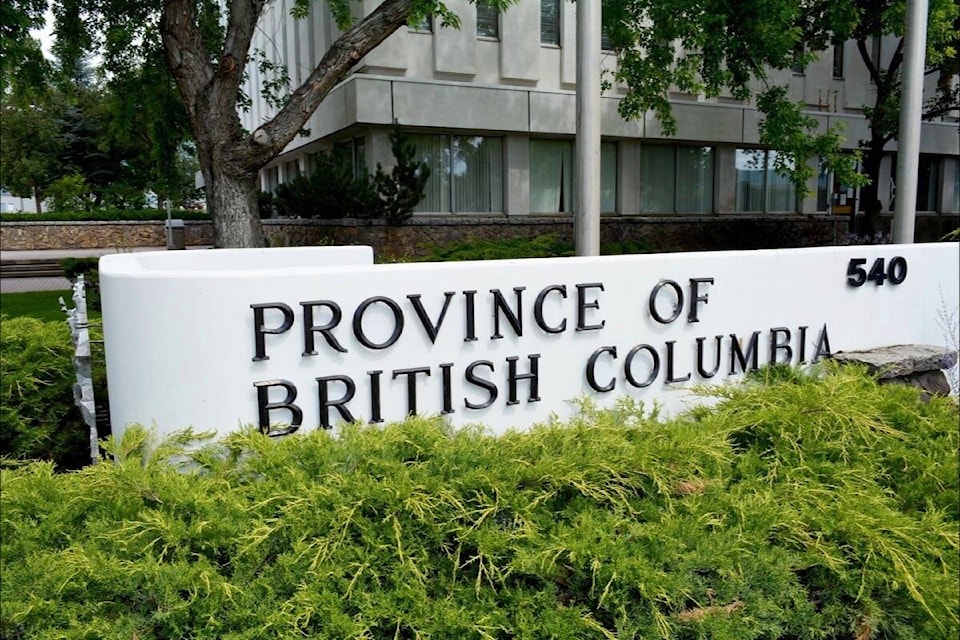A new report finds šĶÐßēÝŅÐūŋËųa pattern of under-representationšĶÐßēÝŅÐūŋËų of Indigenous and racialized British Columbians, who šĶÐßēÝŅÐūŋËųface systemic barriers in their pursuitšĶÐßēÝŅÐūŋËų of public service careers.
The report titled Racial Diversity in the B.C. Public Service is among three first-of-their-kind reports released Thursday (May 30) describing barriers Indigenous Peoples and racialized people experience in the public service, schools and health care.
The report looking at the provincial public service reviewed the representation rates of 16 self-identifying Indigenous and racialized groups among 30,600-plus public service employees as of January 2022.
While its findings represent preliminary results, they point toward barriers preventing employees from racialized groups šĶÐßēÝŅÐūŋËųfrom entering and moving into positions with greater accountabilities and responsibilities, including executive positions.šĶÐßēÝŅÐūŋËų
The report compared representation rates of those groups within B.C.šĶÐßēÝŅÐūŋËųs general labour force and the population to the provincial public sector.
Based on the available methodology, the report started with an expectation that representation of the 16 groups šĶÐßēÝŅÐūŋËųshould at least match, if not be higher than, the B.C. labour force and population rates.šĶÐßēÝŅÐūŋËų
But that was not the case. Only four groups had rates similar to or greater than the labour force and population at large. Eleven of 16 groups were over-represented in jobs that paid less and under-represented in supervisory positions.
šĶÐßēÝŅÐūŋËųParticularly notable was the lack of executive-level representation for 10 Indigenous identity and racial groupsšĶÐßēÝŅÐūŋËųnot just under-representation, but no representation,šĶÐßēÝŅÐūŋËų it reads.
Individuals who identify as First Nations represent 3.7 per cent of the population and three per cent of the workforce, but two per cent of the public service workforce. Individuals who identify as Chinese represent 11.2 per cent of the population, 10.2 per cent of the labour force and 4.8 per cent of the public sector workforce.
RELATED:
The report suggests one potential explanation for the under-representation is that many racialized employees may not disclose this information and end up being classified as belonging to an šĶÐßēÝŅÐūŋËųunknownšĶÐßēÝŅÐūŋËų group.
šĶÐßēÝŅÐūŋËųThis can occur because of a lack of cultural safety on the part of the employer,šĶÐßēÝŅÐūŋËų it reads. šĶÐßēÝŅÐūŋËųAs a result, many of the differences seen between actual and expected representation rates may be addressed with a more complete data set.šĶÐßēÝŅÐūŋËų
The report stresses it did not include a number of other relevant pieces of employee information.
šĶÐßēÝŅÐūŋËųFor example, looking at factors related to age, years of servicešĶÐßēÝŅÐūŋËųĶeducation and career area can help identify barriers,šĶÐßēÝŅÐūŋËų it reads.
The report is also unclear how racial background intersects with factors such as gender, sexual orientation or disability. The report notes that executive positions are šĶÐßēÝŅÐūŋËųrelatively rarešĶÐßēÝŅÐūŋËų in the public service, comprising only 0.6 per cent šĶÐßēÝŅÐūŋËų or 1 out of every 167 šĶÐßēÝŅÐūŋËų positions.
šĶÐßēÝŅÐūŋËųSo smaller Indigenous identity and racialized groups may require a different approach to better understand representation in the executive classification,šĶÐßēÝŅÐūŋËų it reads.
According to the report, the public service šĶÐßēÝŅÐūŋËųis committed to removing systemic racism from its hiring and career development practices.šĶÐßēÝŅÐūŋËų
The reports are released under B.C.šĶÐßēÝŅÐūŋËųs Anti-Racism Data Act. Effective since 2022 it requires the provincial government to publish information about systemic racism and racial equity by June 1 each year.
The three reports are the first under the act and their researchers used data from the B.C. Demographic Survey and other sources.
The reports also appear after the provincial government passed legislation including targets for the recruitment, retention and advancement of Indigenous and other racialized people throughout government.



